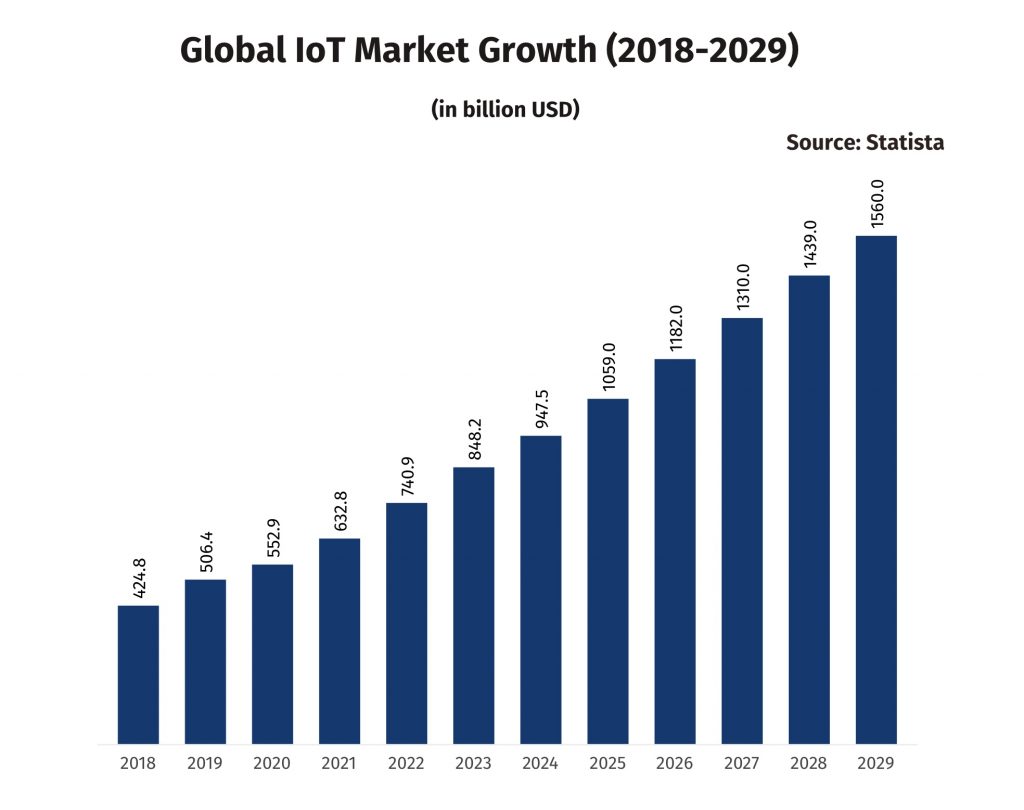The Internet of Things (IoT) has become a fundamental component of modern technology. According to an Aug. 30 notice from Stocklytics.com, the global IoT market is expected to earn $1.5 trillion in revenue by 2029. As the site’s financial analyst, Edith Reads, observes: “The demand for more technological advancements, widespread industry adoption, and a growing emphasis on security, standards, and sustainability are bolstering the IoT market. Healthcare, manufacturing, transportation, and smart homes’ increasing integrations of IoT solutions to optimize operations have also played a critical role in its market growth.”
In 2018, the IoT market generated $424.8 billion in revenue. By 2019, it had crossed the $500 billion mark, marking a 19 percent increase. The market continued its upward trajectory in 2020, reaching over $552.9 billion, and then surged past $632 billion in 2021. By 2022, earnings jumped past $700 billion, settling at $741 billion, an outstanding 74 percent increment from 2018 and 17 percent from 2021. The industry continued to show an impressive earnings trajectory, closing 2023 with almost $850 billion added to its revenue belt.
Analysts anticipate the IoT market will exceed $947 billion by the end of 2024 and surpass $1 trillion in 2025. By 2029, they expect the market to reach $1.56 trillion, reflecting a 13 percent compound annual growth rate (CAGR) since 2018.
Why is the IoT Market Growing?
The Internet of Things increasingly integrates blockchain technology, making it highly marketable. For instance, in December 2023, Vodafone and Deloitte partnered to release new blockchain IoT services to simplify operations in supply chains. Through this collaboration, Vodafone’s DAB trading platform will leverage blockchain to manage and verify transactions between IoT devices.
Besides, many countries are leaning towards smart homes, given the surging population and demand for urbanization, which calls for more IoT projects, including smart homes and infrastructure.
According to the World Economic Forum, roughly 1.3 million people relocate to metropolises weekly, and by 2028, over 5 billion people will live in cities. This highlights the growing attachment to urbanization and further hints at more developments of smart homes.
Moreover, consumers are implementing ingenious city solutions like smart transportation, smart grids, and smart air quality controllers, raising the global market potential of connected devices.












